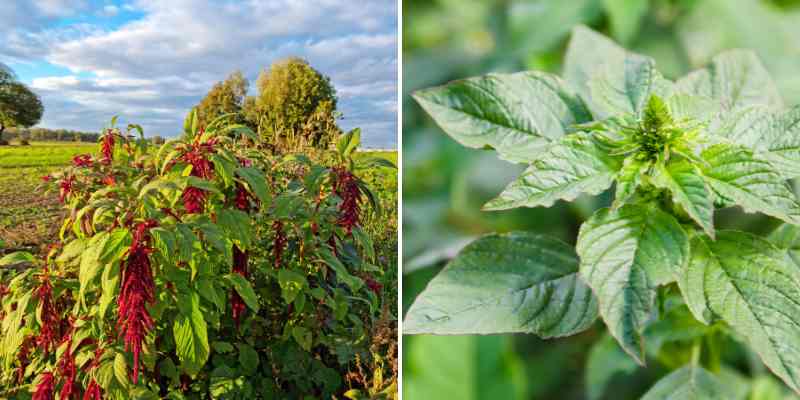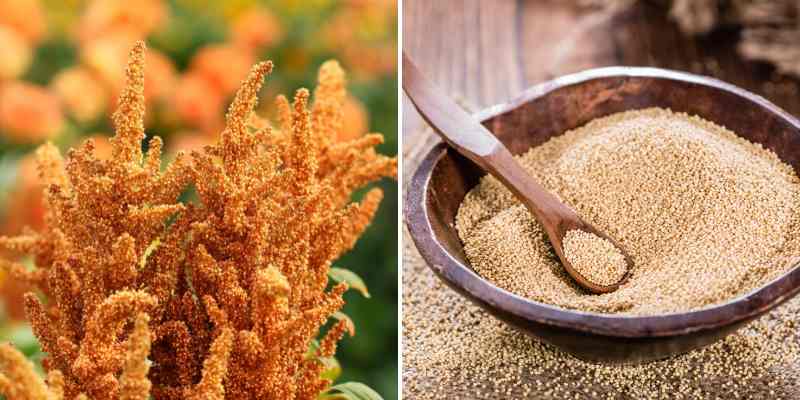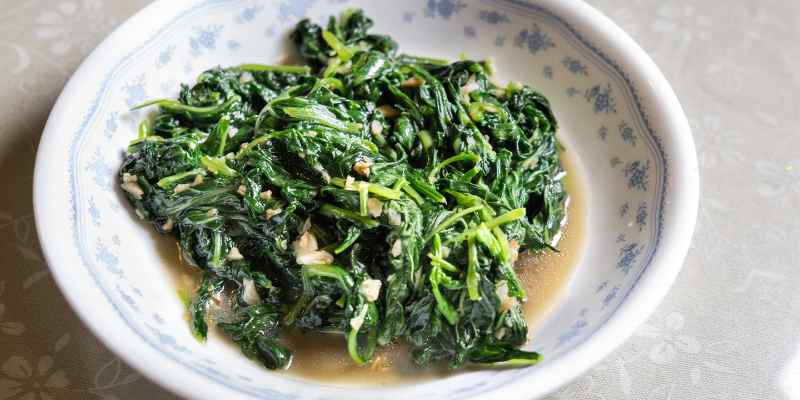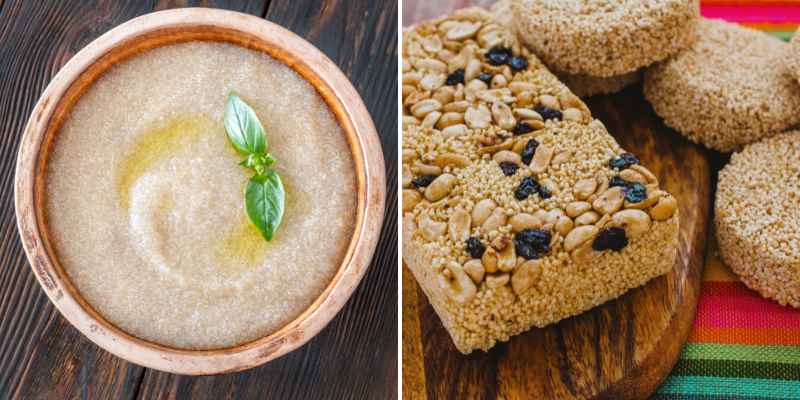- Celosia: What If We Ate It?
- Orach in the Kitchen: Vegetarian Recipes
- Borage Leaf Soup and Helianthus Soup: A Velvety Winter Comfort
- How to Cook Leaves of the Salad Tree 'Toona sinensis'?
Amaranth is gradually making a comeback... well, in gardens and vegetable patches. Does this plant ring a bell? It is one of the oldest edible plants cultivated by humans, perfect for a nourishing garden, and its culinary value is being rediscovered beyond its ornamental qualities. Let’s delve deeper into this remarkable plant, versatile in the kitchen, which deserves more recognition among vegetarian recipe enthusiasts.
Amaranth, Who Are You?
Also known as Inca wheat, fox tail, or elephant head for certain species, amaranth is an annual plant with green, often reddish foliage, characterised by rapid growth and atypical flowering, eccentric and spectacular in its genus.
A bit vintage with its trailing, brightly coloured spikes or clusters, sometimes green, amaranth, a true comfort plant, brought joy to gardens in the 70s and 80s, sown or planted in sunny beds with warm colours. Several varieties stem from the typical species Amaranthus, some with golden or purple foliage. Depending on the variety, it grows between 80 cm and over 2 m.
While it’s now found from Asia to Africa, where it’s cooked like millet, and in Latin America, it originates from this region, specifically Mexico and its Aztec civilisation.
Both the leaves and seeds of amaranth are edible, making it an ornamental plant, a leafy vegetable, and a pseudo-cereal. It’s also a dye plant.
Amaranth doesn’t go unnoticed in gardens! Harvesting and Preparing Amaranth
The fresh leaves are the most flavourful part and are easily used in cooking. Harvest them about a month after sowing and as needed, before the plant starts flowering. They are best when still tender, especially for raw use in salads. Older leaves can be cooked as a green vegetable, similar to spinach or lamb’s quarters. Cut the tender stems, which are also edible. You can also boil the leaves for a lighter version.
Note: You can use all species and varieties, though the most common is Amaranthus caudatus.

The seeds, on the other hand, are tiny, emerging from silky spike-like inflorescences, and are used as a pseudo-cereal, like celosia, in many African and Asian countries. They ripen in late summer, when the flowers have faded and the spikes have formed seeds.
It’s important to harvest them before they fall to the ground. To do this, lay out a tarp to catch them, similar to how you’d harvest quinoa seeds. Cut the flower stems and rub the spikes between your fingers to release the seeds onto the tarp. Dry them thoroughly and rinse them well, like rice or quinoa, before cooking.Note: The most productive species for seeds are Amaranthus cruentus and Amaranthus hypochondriacus.

Amaranth on the Menu: Recipe Ideas
Amaranth’s mild flavour lends itself to countless culinary uses. Some detect a nutty taste or a hint of walnut. Chefs haven’t overlooked it and now incorporate it into diverse dishes for innovative vegetarian cuisine. As you’ll see, amaranth takes us on a global culinary journey!
1. Amaranth Leaves in the Kitchen: Cooked or Raw
Amaranth leaves are rich in vitamins and minerals, including vitamins A and C (twice as much as spinach), as well as carotene, iron, zinc, calcium, and fibre, making them a very healthy ingredient for your diet. They’re a great substitute for spinach.
- In a velvety soup : with green vegetables like leek and courgette, and coconut milk for a nourishing green soup. Prepare a more classic soup by cooking amaranth leaves with carrots, potatoes, and onions. Add spices and stock for extra flavour.
- In a salad: use young amaranth leaves raw in a fresh salad with other greens, cherry tomatoes, cucumbers, and a light vinaigrette.
- In a curry or dhal: incorporate amaranth leaves into a curry with lentils, potatoes, or other seasonal vegetables. The leaves add an interesting texture to such dishes. A splash of coconut milk, and you’re instantly transported to India!
- Sautéed amaranth leaves: sauté the leaves with garlic, ginger, and chillies. This is an Indian-inspired dish where amaranth or lamb’s quarters are used, with the leaves cooked like spinach. For an African version, prepare the leaves as Biteku teku. For an Asian-inspired dish, sauté the leaves with soy sauce, garlic, ginger, and sesame seeds.

- Stuffed amaranth leaves : for a Mediterranean twist, stuff large amaranth leaves with a mixture of rice, vegetables, and spices, then steam or bake them.
- Amaranth leaf pesto: blend the leaves with pine nuts, garlic, Parmesan, and olive oil to create a green, flavourful pesto, perfect for pasta or as a spread for appetisers.
2. Amaranth Seeds in the Kitchen
Another use for this versatile plant is its seeds. They can be used in a variety of dishes, from desserts to main courses, including breakfasts, snacks, and bread. They are a great source of protein for those with gluten intolerance and have the advantage of a low glycemic index. You can cook them like rice or buckwheat, toast them, use their flour, or even sprout them.
- In porridge: for a nutritious breakfast, replace oats with amaranth. Cook the milk and amaranth seeds, and enjoy hot, topped with almonds, hazelnuts, raisins, maple syrup, or molasses.
- In an energy bar, for a Mexican-inspired treat like palanquetas: incorporate them into a homemade cereal bar with peanuts, raisins, walnuts, or hazelnuts and honey. Use them also in homemade granola with sesame seeds, which pair well!

- For making bread, pancakes, crepes, and cakes, use amaranth flour, which is very digestible and available in organic shops. It’s a gluten-free alternative worth trying, best mixed with another flour.
- In a Hawaiian poke or a Buddha bowl : cooked seeds replace rice or quinoa, and you can mix them with raw vegetables, cooked vegetables, and legumes.
- Instead of quinoa in all summer salads, for example with prawns, or to replace bulgur or durum wheat semolina in an Oriental tabbouleh. You can also mix them with boiled buckwheat, as in this gourmet plate with feta.

- In a lentil curry: another vegetarian recipe where amaranth can be used to thicken and enrich the curry, adding a unique texture and flavour.
- As in Tanzania and Kenya, where a typical dish called terere locally uses amaranth with maize and millet to prepare ugali, a kind of local polenta. This recipe is typical of the Arusha region in Tanzania.
- In a milky dessert, amaranth pudding: prepare a creamy, vitamin-rich dessert similar to rice pudding but using amaranth as a thickener.
Going Further…
Discover our range of amaranth, and other leafy vegetables, in our articles:
- Celosia: What If We Ate It?
- Orach in the Kitchen: Vegetarian Recipes
- Borage Leaf Soup and Helianthus Soup: A Velvety Winter Comfort
- How to Cook Leaves of the Salad Tree 'Toona sinensis'?
How to harvest and use amaranth in cooking?
































Comments